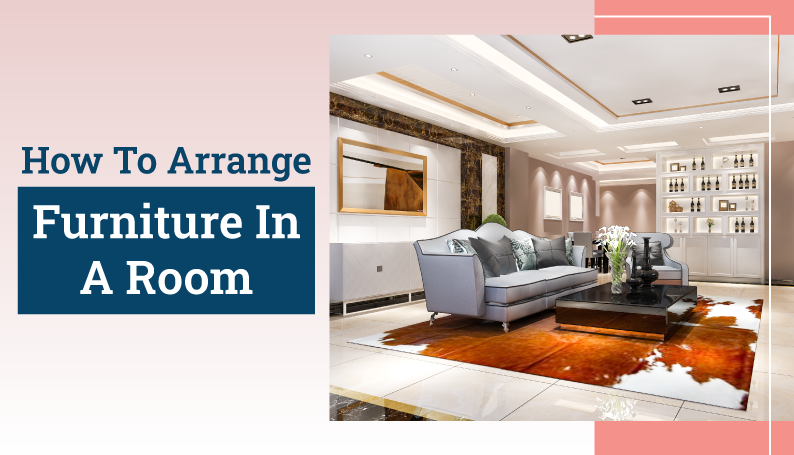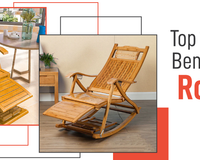Whether you are trying to build a quiet setting or a completely functional space with lots of storage, our furniture arrangement guide will bring your room decor ideas to life. If you want a modern yet tasteful living room furniture arrangement in your home but are unsure how to arrange the furniture, read this.
Fortunately, you don't need to be an expert in interior design to create a welcoming atmosphere. Your living space may be transformed entirely with the appropriate furnishings and a few simple tricks. Learn how to arrange the furniture in each area of your house by using our practical advice and designer thoughts.

Importance of arrangement of furniture in a living room the right way
Furniture is a tool used by interior designers to create an appealing feeling of order. Along with design components like shape, form, color, and texture, they consider two- and three-dimensional design while arranging furniture. It is possible to create furniture using design principles.
Types of rooms
- Wide Rooms
- Small Rooms
- Symmetrical Rooms
Arranging furniture in a vast room
1. Leave empty spaces to walk around
It's crucial to leave space for a walkway in a narrow space. Plan on leaving at least two feet between significant furniture items, such as couches and chairs. Ensure the entryways have enough room so the arrangement doesn't feel congested but rather inviting.
2. Consider the longest wall and place your sofa in parallel
Place your sofa lengthwise down the long portion of the room to make your living space appear larger. This may be against a wall or floating more toward the center, depending on how your space is set up. With this setup, the space seems open and airy rather than crowded.
3. Add other seating furniture close by for better conversation
It might not be easy to hold close-knit talks in an ample space. Place your chairs so they are not more than eight feet away from one another to make this practicable. You may even construct two chat areas in an ample space.
4. Measure the distance from seating furniture to the coffee table
Try reaching across the space to place down a magazine or wine glass. Including coffee and end tables may add comfort to the area and provide a flat surface reachable from every location.
5. Add storage at a consistent distance
Utilize your spacious living space by adding furniture like wall-to-wall entertainment consoles and bookcases. Coffee tables with additional drawers and concealed storage are options.
Arranging furniture in a small room
1. Your main furniture should be the center point
Angle your primary furniture in that direction to draw attention to any noteworthy features in your living room, whether they be a flat-screen TV, big windows, or a lovely fireplace. Or you can consider installing a water fountain in the centre of the room, pointing your furniture in its direction will keep people entertained. Thanks to this layout design, people will feel perfectly at home in your place, which immediately offers consistency. When you include a Rocking Bamboo Lounge Chair by Urban Cart, a small living room's furniture arrangement becomes ideal for your relaxing sessions.
2. Ensure you buy the right size of furniture to fit into the room
Select furnishings that are more compact, have clear tables and have simple styles. Use elevated furniture, those that are not almost level to the ground. Making these adjustments gives your usually cramped environment more room, vitality, and visibility. An essential piece of advice which isn’t limited to furniture, you should also consider the size of other home decor items including wall clocks that compliment the design theme.
3. Rounded furniture will give more space to walk around
Choose rounder tables rather than ones with sharp corners because there won't be as much space for walking about and moving in a smaller space. Drum tables, oval coffee tables, and circular end tables are available options. This tip should be followed for a small living room furniture arrangement.
4. Reduce the number of storage furniture
Look for furniture with hidden storage, such as ottomans and couches with pockets under the cushion. A clutter-free environment is more soothing and doesn't draw attention away from the design and decorations of your area. Aim to keep your living area from feeling claustrophobic. Limit the amount of furniture you bring into the space, and only bring in more seats as needed.
Arranging furniture in a symmetrical room
1. Set your focus point for the room
Place your primary furniture in a central location—often a fireplace or television—and face it. It's usually preferable to float your furniture in centrally located rooms so that everyone can see from wherever they are seated. Because the visitors are arranged closer together, making smooth communication is possible.
2. Utilise your perimeter for cabinets and bookshelves
Create a comfortable and proper structure for the area by positioning cabinets and bookshelves around the edge. The space seems unified and cosy, thanks to the storage that has been added on the sides.
3. Leave enough space to walk around
Open space should be accessible for entry and exit routes, with seats and sofas positioned closer together for comfort and discussion. Use side and end tables as fast and convenient places to deposit belongings upon entering the space to prevent congestion in the room's center.
4. Get greenery in the room
Spruce up your living area, by adding an artificial vertical garden to your living area. When positioned next to furniture, in corners, or near windows, greenery gives a space depth.
Conclusion
The living room should be the most comfortable area of any house since it ought to be comfortable if a house should be anything. In addition to being comfortable, living room furniture needs to be beautiful and available in whatever design you choose. The arrangement is what ultimately makes a place better, symmetrical, and attractive.




